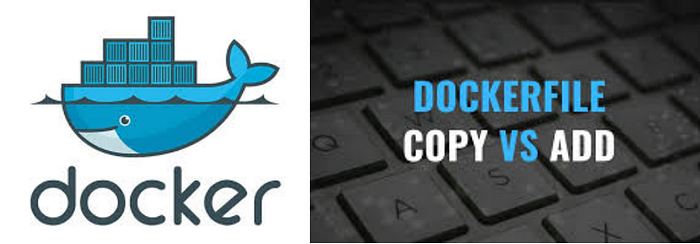
Photo by Rubaitul Azad on Unsplash
Mastering Docker: COPY and ADD Instructions for Efficient Image Building

Docker, the leading containerization platform, offers various instructions for building images. Among these, COPY and ADD stand out as essential tools for file management. Understanding their nuances is crucial for creating optimized Docker images. Let’s dive into the intricacies of COPY and ADD, exploring their functionalities and best practices.
The Power of COPY in Docker
COPY: Your Go-To Instruction for File Transfer
The COPY instruction in Docker provides a straightforward method to transfer files from your host machine to the Docker image. Its simplicity makes it the preferred choice for most file-copying scenarios.
Syntax Options for COPY:
Basic Syntax:
COPY [ — chown=:] …
Syntax for Paths with Whitespace:
COPY [ — chown=:] [“”,… “”]
The — chown option allows you to set file ownership within the container, enhancing security and access control.
Unleashing ADD’s Advanced Features
ADD: The Swiss Army Knife of File Operations
While COPY excels in simplicity, ADD offers extended functionality for more complex file handling tasks.
Syntax Options for ADD:
Basic Syntax:
ADD [ — chown=:] …
Syntax for Paths with Whitespace:
ADD [ — chown=:] [“”,… “”]
ADD’s Unique Capabilities:
Automatic extraction of local tar archives
Ability to copy files from remote URLs
Optimizing Your Dockerfile: COPY vs. ADD
To create efficient Docker images, consider these best practices:
- Leverage ADD for Local Archive Extraction
Use ADD specifically for extracting local tar files:
ADD rootfs.tar.xz /
This command automatically unpacks the archive into the specified directory.
- Avoid ADD for Remote URL Downloads
Instead of using ADD for remote file fetching, employ curl or wget within a RUN instruction:
RUN mkdir -p /usr/src/things && curl -SL http://example.com/big.tar.xz | tar -xJC /usr/src/things && make -C /usr/src/things all
This approach allows for more controlled file handling and helps minimize image size.
- Prioritize COPY for Standard File Transfers
For basic file copying tasks, always opt for COPY. It maintains Dockerfile simplicity and prevents unnecessary image bloat.
Conclusion:-
Mastering the use of COPY and ADD instructions is key to creating streamlined, efficient Docker images. Employ COPY for straightforward file transfers and reserve ADD for scenarios that truly benefit from its advanced features, particularly local tar extraction. When dealing with remote files, utilize curl or wget within RUN commands to maintain optimal control over image size and content.
By adhering to these best practices, you’ll create Docker images that are not only functional but also optimized for performance and resource efficiency. Remember, the goal is to build images that are lean, secure, and perfectly tailored to your application’s needs.
